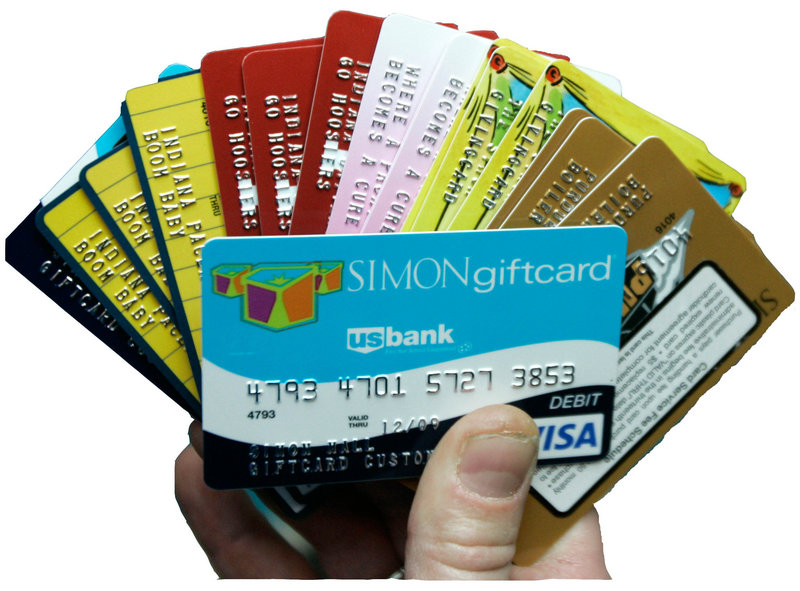NEW YORK – Help is on the way for cardholders this weekend. Newly purchased gift cards won’t expire as quickly, and late fees on credit card payments won’t be as punishing.
The final stage of consumer protections signed into law earlier this year go into effect today. Yet the changes only curb select practices; other fees and charges still abound.
A look at the new safeguards, and how cardholders can still get burned.
CREDIT CARDS – PENALTY FEES
New Protection: Fees for late payments and other transgressions will be capped to the amount of the violation, up to $25. Previously, these fees were often between $35 and $39 regardless of how much was owed. Also, a single violation can no longer result in more than one fee.
Gaps to Watch: Technically, there isn’t an outright ban on penalty fees higher than $25. Banks that want to impose a higher fee simply need to give regulators justification for doing so. For example, a bank might provide an analysis showing that the costs associated with late payments average out to $30 per violation, said Lauren Bowne, an attorney with Consumers Union in San Francisco.
It’s too early to tell whether banks will pursue this route, but the door is open.
Another exception to the $25 cap is if a customer repeats the violation within six months. Then the cap rises to $35.
Also keep in mind that the rule applies specifically to penalty fees. There aren’t any caps on other charges. And not surprisingly, many issuers hiked fees for balance transfers, foreign transactions and cash advances in the past year.
RATE HIKES
New Protection: Banks must review a rate hike every six months to decide whether the increase is still warranted. If the factors that prompted the hike are no longer applicable and there are no new justifications to warrant the hike, the rate must be lowered.
This rule applies to hikes dating back to Jan. 1 of last year, when banks began raising rates in anticipation of the new regulations.
Gaps to Watch: Even if a bank finds that a rate should be lowered, the reduction doesn’t have to restore the prior interest rate. So even if a rate was increased 10 percent, a review could result in a 1 percent scaleback.
Banks also have some wiggle room in the factors they use to conduct reviews. They can either base a review on the original reason for the rate hike, such as market conditions. Or they can determine whether the rate is in line with their current interest rates for new customers.
That leeway means rate hike reviews likely won’t bring consumers too much relief, said Bowne of Consumers Union.
Also note that such reviews are not required for cards with variable rates, which rise and fall with a certain benchmark, such as the prime rate.
INACTIVITY FEES
New Protection: These fees will be banned regardless of how they’re dressed up. For example, an annual fee that’s waived if a customer spends a certain amount is still an inactivity fee.
Gap to Watch: There’s still a reason to keep a card active, even if by making a small purchase here and there: Banks can still close inactive accounts. That could hurt your credit score depending on how long you’ve had the account and your broader financial standing.
This happened to many customers during the credit crunch, as card issuers looked to limit their exposure to risk by closing unprofitable accounts.
GIFT CARDS – EXPIRATION DATES
New Protection: Gift cards issued after Aug. 22 must have expiration dates that are at least five years from their date of purchase.
Gap to Watch: The rule doesn’t apply to certain gift cards, such as those issued as part of a rewards or loyalty program. So if you redeem your credit card rewards points for a retailer gift card, it could potentially come with a much quicker expiration date. The same is true for rebate cards issued by retailers.
The rules also don’t apply to reloadable, prepaid cards. These cards are sold in drugstores or online and often charge many service fees.
Copy the Story Link
Send questions/comments to the editors.



Success. Please wait for the page to reload. If the page does not reload within 5 seconds, please refresh the page.
Enter your email and password to access comments.
Hi, to comment on stories you must . This profile is in addition to your subscription and website login.
Already have a commenting profile? .
Invalid username/password.
Please check your email to confirm and complete your registration.
Only subscribers are eligible to post comments. Please subscribe or login first for digital access. Here’s why.
Use the form below to reset your password. When you've submitted your account email, we will send an email with a reset code.